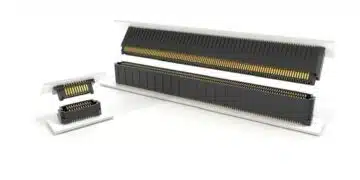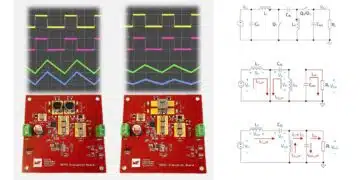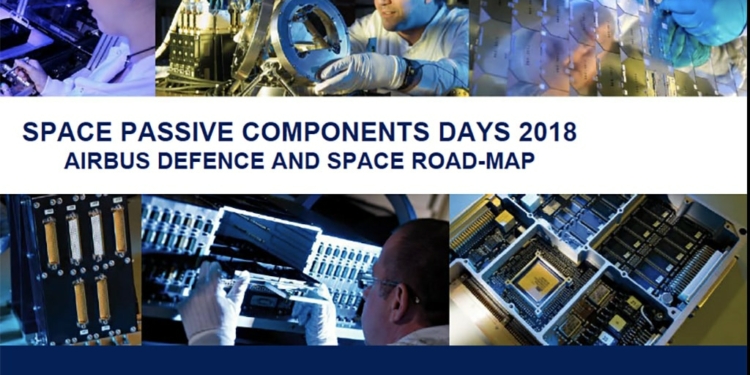source: ADS; ESA SPCD 2018 Symposium
EPCI e-symposium library article
Airbus Defence and Space Roadmap presentation by Laurent Toudret during the ESA SPCD 2018.
published by EPCI under approval of ESA SPCD 2018 organizing committee.
Title: Airbus Defence and Space Roadmap for Passive Components
Author(s): Laurent Toudret
Organisation(s): Airbus Defence and Space
Symposium: ESA SPCD 2018
Reference: Technology Roadmaps
ISBN: N/A
e-Sessions Applications: Aerospace
e-Sessions Scope Components: Capacitors, Inductors
e-Sessions Topics: Quality & Reliability, Roadmaps
Key Ideas from the Last SCPD 2013 and 2016
- SCPD-2013 Overview of passive components used in space:~80% of total components
- Trend for the future: Miniaturisation
- Lower supply voltage for IC, high frequency operation, high temperature operation, higher power for RF connectors
- Need to be competitive for European manufacturers
- Design for ManufacturingGoal: 100% of part in automatic assembly
- Passive part assembly qualification are critical
- Major trends VLSI like FPGA: lower supply voltage, higher operating frequency, many decoupling capacitors
- Waiting for GaNFET for DC-DC converter
- High data-rate interface
- RF domain: 27-31 GHz parts are increasing, development for Q/V band running, rated power increase, connectors comes to their limits.
- Technology Status in Europe. The needs expressed by the space industry are almost covered with ESA qualified and/or evaluated components with the support of national agencies (CNES DLR)
- Some missing components: chip ceramic BME in 0402, multi-anode polymer tantalum capacitors, high voltage relays, high efficient SMD magnetics
All remarks from the two first SCPD are still valid:
- Lower size
- Higher performance
- Higher frequency
- Higher power to be managed
- Lower cost
What is new in 2018:
- We face a huge increase of data traffic
- Exponential trend for global data traffic and mobile data
- More and more Machine-to-Machine exchange (x8 in 5 years) and mobile service
- Consequences for Data Exchange in Space
- Move from RF to Optical Link between ground and satellites, between satellites LEO-to-GEO, LEO-to-LEO
- Wide increase of data to be processed on board
- In parallel, there are major evolutions in data processing
- From system in box to system-on-chip
- Mix of electronics: digital, power, RF signal interface to be managed in the same area
- Applications: Frequency Conversion, Signal Processing, Data Compression, Signal/ Data Security/Encryption, Data Storage, Telemetry and Control
Consequences for Electronics
- Voltage Power Supplies for SoC
- Number of power supplies
- Due to the high number of different functions and interface types, more and more different supply voltages will have to be managed separately
- Multiplication of Point-of-Load and Low-Drop-Out regulator
- Increase of Electromagnetic Compatibility constraints
- Low voltage and High current: down to 0.8V >10A, supplied by a DC-DC converter (several 100kHz)
- High frequency interface: 25GHz, even more in a near future
- DRR3/4 memories: high data-rate exchange
- Low voltage data monitoring for the supply currents
Consequences for passive parts
- Decoupling capacitor for FPGA and SoC can have a major impact on surface
- Use of low voltage, high capacitance, low size, last generation of BME ceramic capacitors are mandatory
- In addition, large capacitance, low voltage and low ESR: tantalum, polymer multi-anode
- Supply voltage functions:
- point-of-load and low drop-out voltage regulator
- Use of low voltage, high capacitance, low size, last generation of BME ceramic capacitors are mandatory
- In addition, large capacitance, low voltage, tantalum, polymer, multi-anode (but ESL could be a limit with high-frequency switching operations)
- High current inductors
- Shunts are mandatory for overload protection
- Module interconnection
- Very high-frequency connector (from 6 to 25 Gb/s up to 50Gb/s) with many channels in parallel, press-fit or BGA technology
- EMI management
- Introduction of 0402 RF inductors
- Introduction of Chip ferrite beads for power applications
New Space
Advantage of automotive components:
- Example with chip ceramic capacitor
- Cost: Between ESA and Automotive: x400, Between COTS+ and Automotive:x100
- Miniaturization
- Can be mandatory: due to radiation issue, replacement of IC by discrete solution requiring more space
- Example with ceramic chip capacitor:
- size Comparison from a manufacturer supplying capacitors from commercial to full qualified ESA and MIL, including BME techno: for 1210 size 50V, from 0.1μF in MIL qualified to 1μF in ESA BME, up to 10μF in automotive
- Continuous production quality survey and improvement
Drawbacks of Automotive components:
- Assembly qualification (To be assessed like all components)
- Mechanical vibrations (But qualified through the assembly qualification)
- Out-gassing (To be assessed, especially for inductors, transformers, connectors)
- Long term operation (But not on the lot)
- Early failure rate (No specified screening procedure)
- Lack of lessons learned in space mission
… see more at the full presentation link below…
see the full presentation here:

































